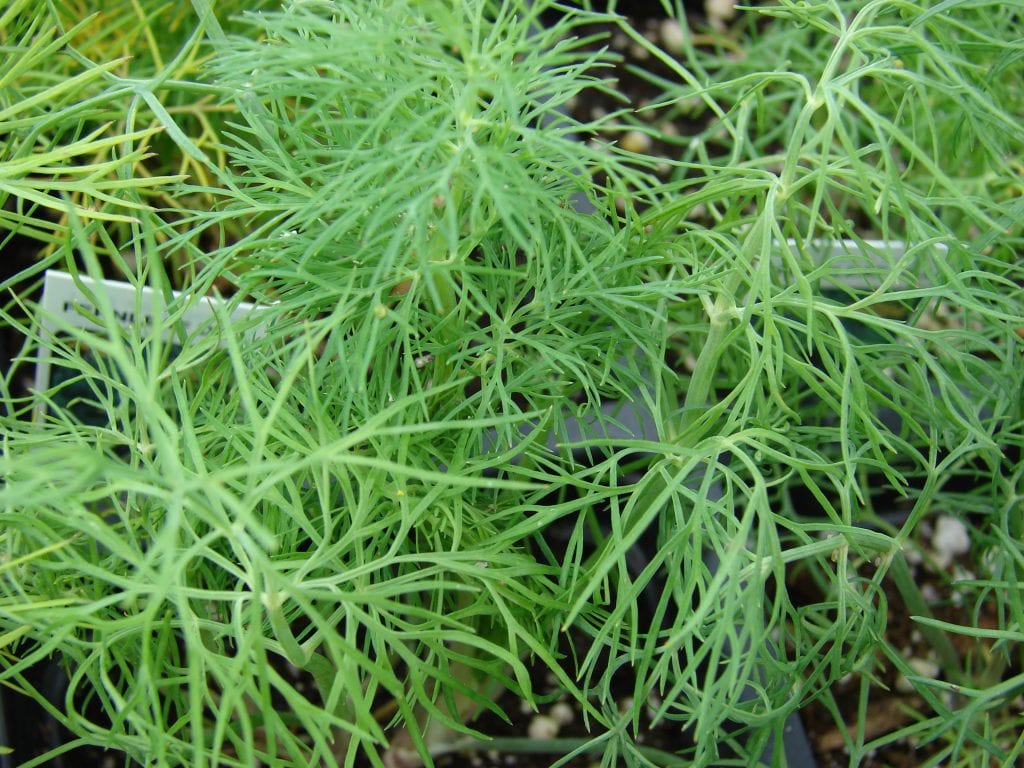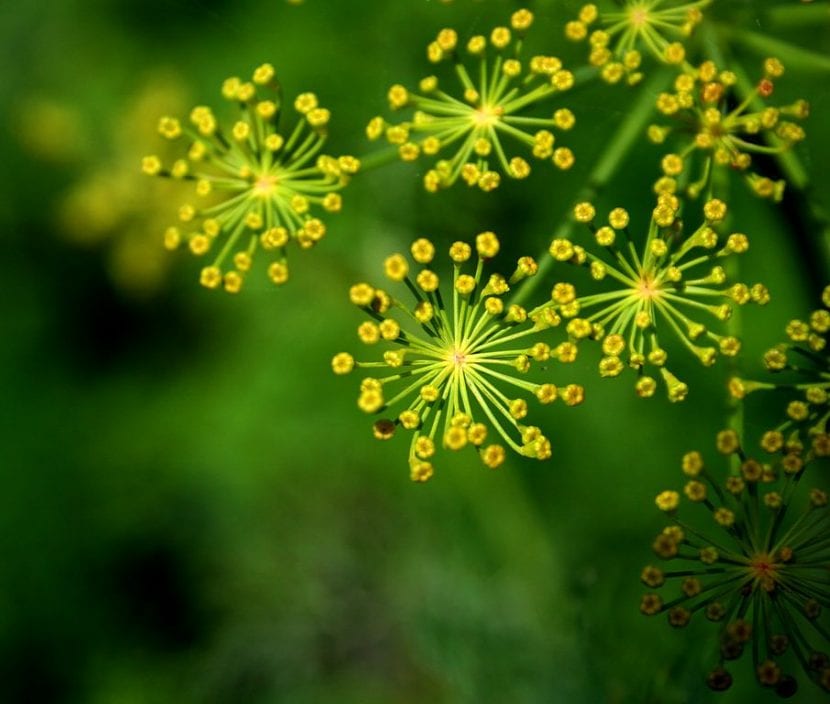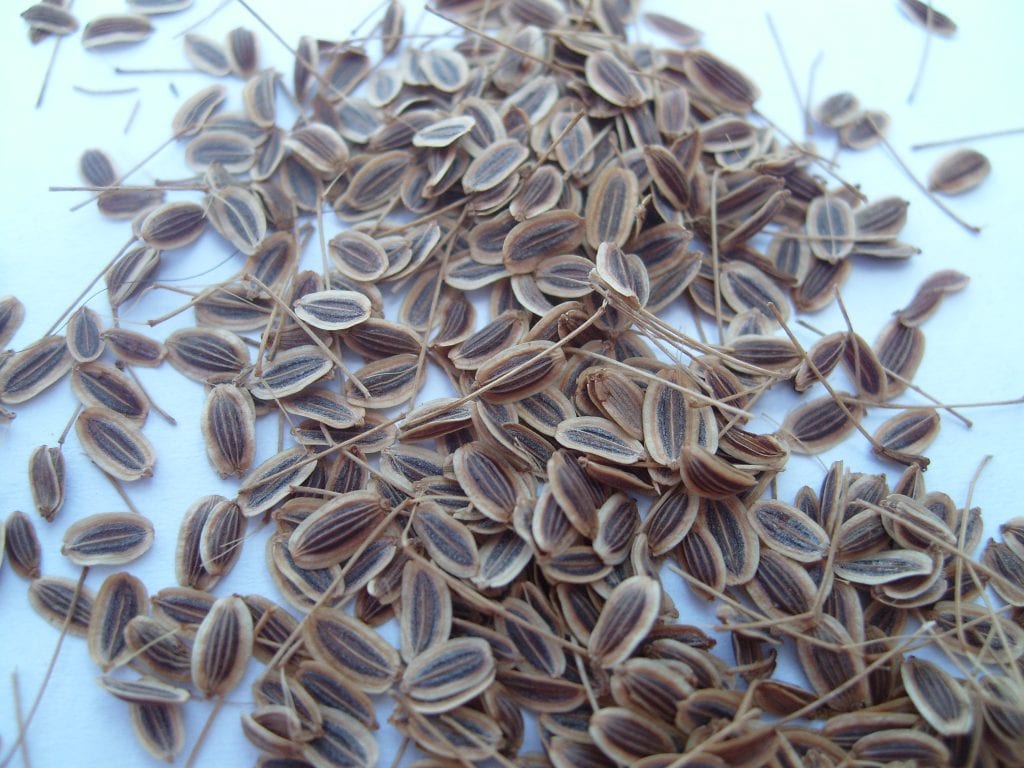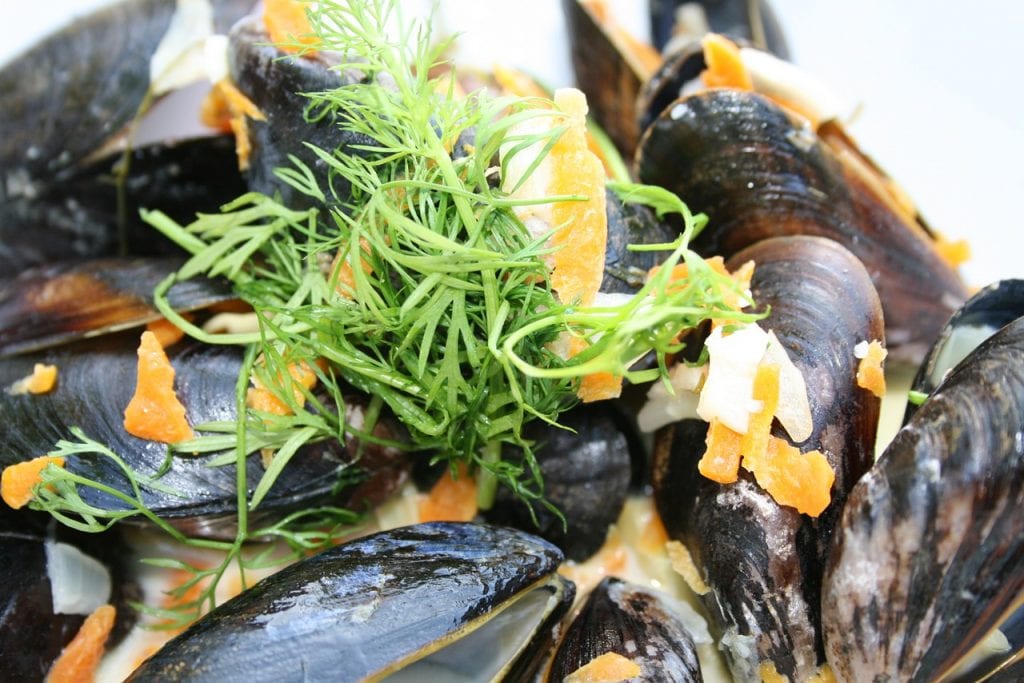
El dill It is an annual herbaceous plant native to the East that reaches a height of approximately 1 meter. It is an edible herb, its leaves and seeds are used to make delicious recipes.
If you would like to know everything about this extraordinary and useful plant, do not miss this article.
Dill characteristics

Our protagonist is a herb native to the East that can be found in southern Europe, Egypt, Asia Minor and North Africa. In Spain it grows in the lower area of the Ebro valley, in Andalusia and Levante, although it is rare. It grows to a height of approximately 1m, with green, hollow and smooth stems.
Its flowers, which sprout in summer, appear grouped in flat yellow umbels. The fruits are dark brown in color, and are about 6mm long; inside are the seeds, which are flat, oval and parchment-colored. These they take an average of 42 days to mature since the flower is pollinated.
How is it grown?

If you would like to grow dill, follow our advice:
Cultivation in the garden
- The first thing to do is prepare the ground, in spring, removing the grass and stones, and leaving it as flat as possible.
- Next, sow the seeds in rows, leaving a distance of about 25cm between them.
- Cover them with a thin layer of soil, just enough so that the wind cannot blow them away.
- Finally water.
Potted cultivation
- The first thing is to prepare a few pots. As this plant grows very fast, rather than seedling trays it is much more advisable to sow its seeds directly in containers of about 13cm in diameter.
- Fill them with universal growing medium, almost completely.
- Place a maximum of two seeds in each one.
- Now, cover them with a thin layer of substrate.
- Then give them a generous watering.
- And finally, place them in an area where the light hits them directly.
They will germinate soon after 14 days, but keep them in those pots until they grow roots from the drainage holes.
When and how is it collected?
Seeds
The seeds are collected when the flowers turn dark brown. To do this, the stems are cut, and tied with a paper bag and then hung down.
Leaves and stems
The leaves and stems are harvested when the plant reaches about 25cm Tall.
Uses and properties of dill

Clam chowder with dill.
Uses
Dill is used above all in the kitchen: its leaves they are used in fish stews, herring preserves, salads, sauces, marinades, and even as a preservative; the seeds They are used above all to flavor pickle vinegar.
Properties
Besides being a culinary plant with an exquisite taste, it also has interesting medicinal properties. In fact, it is digestive, carminative, diuretic, antiseptic, sedative y antihemorrhoidal.
What did you think of this plant?
Good morning Monica,
Thank you very much for the article. Would I need some advice, please: I really like dill, but every time I plant it it is covered with a very fine white powder, I suppose it is some fungus, what can I do? I have tried to water it underneath, so that there is no humidity, but there is no way, I always end up throwing it away. I have it on the balcony, so there is plenty of light (and even sun). Thank you.
Hello Camellia.
Glad you like the article.
That dust you say could be caused by botrytis. It is treated with fungicides that have Iprodione.
But it can be prevented by doing treatments in spring and fall with sulfur or copper, spreading it over the surface of the earth.
A greeting.
Thank you very much, I'll try sulfur, I already have it. All the best.